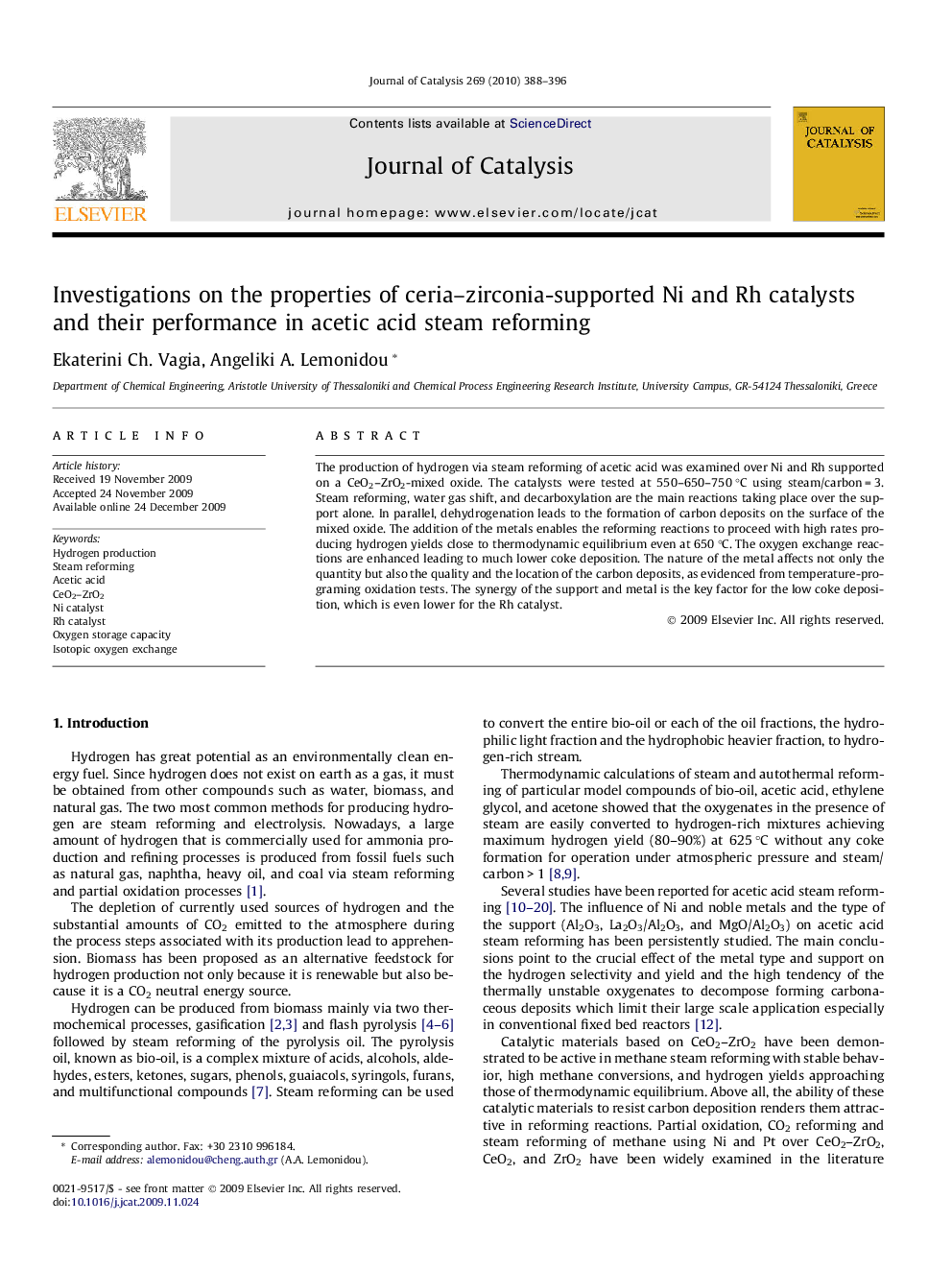| Article ID | Journal | Published Year | Pages | File Type |
|---|---|---|---|---|
| 62026 | Journal of Catalysis | 2010 | 9 Pages |
The production of hydrogen via steam reforming of acetic acid was examined over Ni and Rh supported on a CeO2–ZrO2-mixed oxide. The catalysts were tested at 550–650–750 °C using steam/carbon = 3. Steam reforming, water gas shift, and decarboxylation are the main reactions taking place over the support alone. In parallel, dehydrogenation leads to the formation of carbon deposits on the surface of the mixed oxide. The addition of the metals enables the reforming reactions to proceed with high rates producing hydrogen yields close to thermodynamic equilibrium even at 650 °C. The oxygen exchange reactions are enhanced leading to much lower coke deposition. The nature of the metal affects not only the quantity but also the quality and the location of the carbon deposits, as evidenced from temperature-programing oxidation tests. The synergy of the support and metal is the key factor for the low coke deposition, which is even lower for the Rh catalyst.
Graphical abstractThe performance of ceria–zirconia-supported Ni and Rh catalysts is investigated in steam reforming of acetic acid. High hydrogen yields and very low rates of carbonaceous depositions are observed over the Rh catalyst.Figure optionsDownload full-size imageDownload high-quality image (54 K)Download as PowerPoint slide
